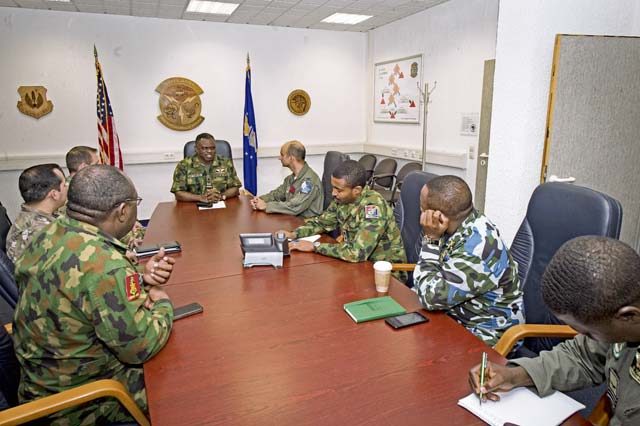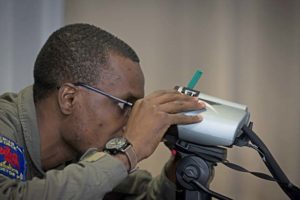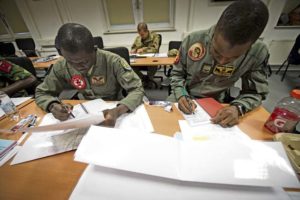
Story & photos by Staff Sgt. Jonathan Bass
86th Airlift Wing Public Affairs
The 4th Combat Training Squadron assigned to the Warrior Preparation Center at Einsiedlerhof Air Station, recently hosted Nigerian and Tunisian service members for the first iteration of a new two-week course.
The Africans participated in the first Air to Ground Integration Course as part of a 300 million dollar congressionally approved funding program. The course develops air to ground integration capabilities with African nation partners.“Air to ground integration is the coordinated air attack by fixed wing and rotary aircraft against hostile targets,” said Capt. Matthew Roberts, 4th CTS chief of plans and programs.

The United States is committed to partnering with African countries to address compatible strategic security objectives, added Staff Sgt. Roger Frederick, 4th CTS tactical air party craftsman.
“Those objectives include combating destabilizing issues and violent extremist activities which could threaten regional security,” Frederick continued.
“A course like this is important for interoperability,” said Roberts. “We need to be able to deploy air power forward across any continent with any of our partners and conduct the same operational and training possibilities downrange.”
The course consisted of a week of classroom studies, a week of simulator training, and a capstone event where airmen controlled aircraft on a range.
“U.S. Air Forces Africa acts as a reliable military partner in Africa. They seek to be the security partner of choice by working with partnered security forces based on their operational needs,” Frederick said.

“This course actually provides two-way learning,” Frederick said. “I now have a better understanding of how Nigeria employs their air force and it’s opened up perspective on how they integrate. I can take the lessons they’ve taught me and apply it to future scenarios.”
AFAFRICA conducts multilateral and mil-to-mil engagements and security assistance with African air forces in order to build aviation capacities, enhance regional cooperation, and increase interoperability.


